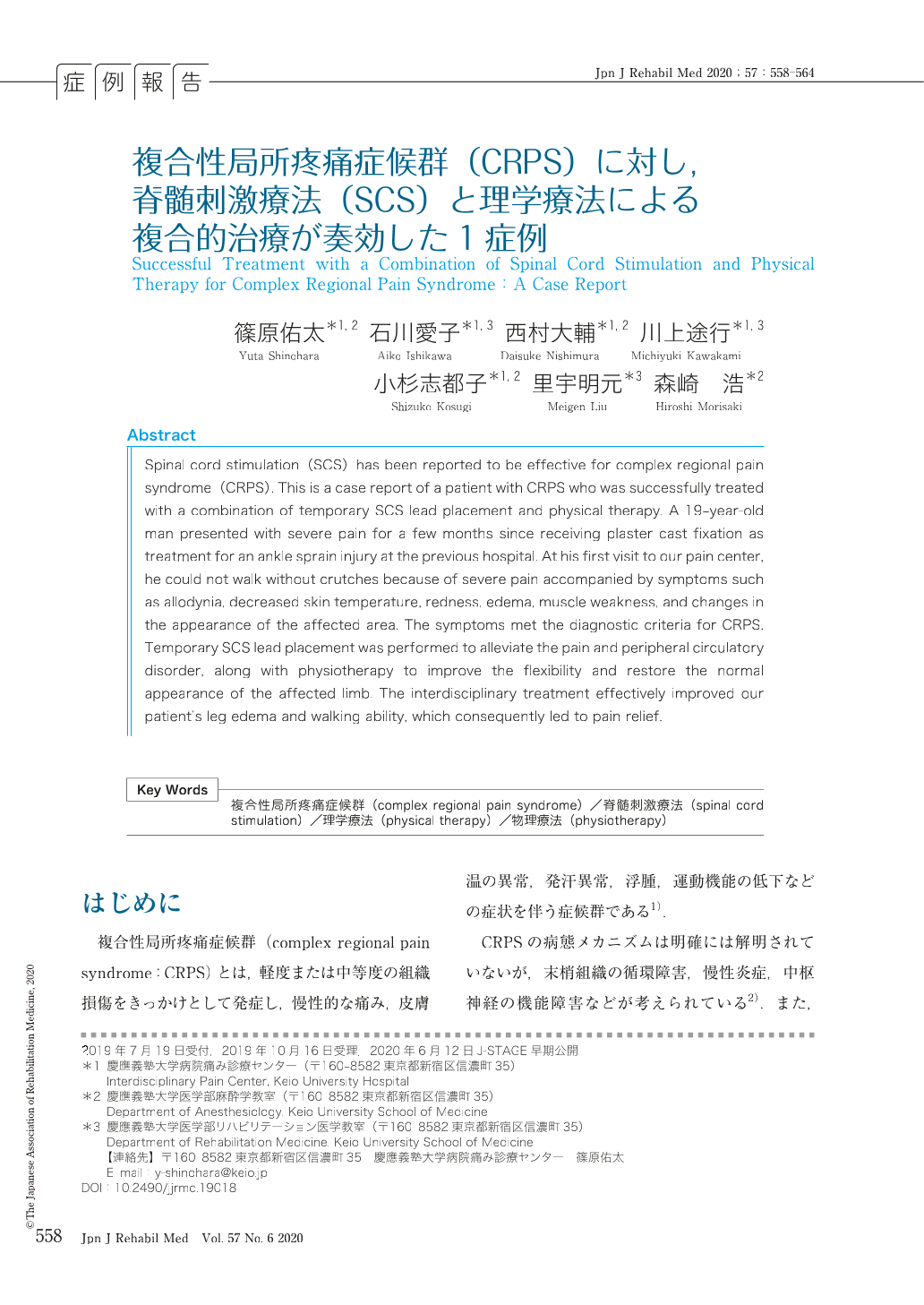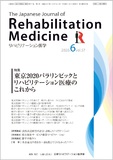Japanese
English
- 販売していません
- Abstract 文献概要
- 1ページ目 Look Inside
- 参考文献 Reference
はじめに
複合性局所疼痛症候群(complex regional pain syndrome:CRPS)とは,軽度または中等度の組織損傷をきっかけとして発症し,慢性的な痛み,皮膚温の異常,発汗異常,浮腫,運動機能の低下などの症状を伴う症候群である1).
CRPSの病態メカニズムは明確には解明されていないが,末梢組織の循環障害,慢性炎症,中枢神経の機能障害などが考えられている2).また,CRPS患者において外傷直後のギプス固定などの不活動が痛覚過敏に関与することが指摘されており3),このような不活動が病的疼痛やアロディニアの発生機序とも密接に関連しているといわれている4).
CRPSの治療については,いまだ一定の見解は得られていないが,脊髄電気刺激療法(spinal cord stimulation:SCS)の有効性が報告されており5),さらに運動療法や物理療法を含む理学療法の有効性を示した報告も散見される6, 7).しかし,これらの治療を複合的に実施した報告は少ない.
今回,足部のCRPSと診断され,SCSと理学療法を併用して複合的な治療を実施した結果,症状の改善を認めた症例を経験したので報告する.
Spinal cord stimulation (SCS) has been reported to be effective for complex regional pain syndrome (CRPS). This is a case report of a patient with CRPS who was successfully treated with a combination of temporary SCS lead placement and physical therapy. A 19-year-old man presented with severe pain for a few months since receiving plaster cast fixation as treatment for an ankle sprain injury at the previous hospital. At his first visit to our pain center, he could not walk without crutches because of severe pain accompanied by symptoms such as allodynia, decreased skin temperature, redness, edema, muscle weakness, and changes in the appearance of the affected area. The symptoms met the diagnostic criteria for CRPS. Temporary SCS lead placement was performed to alleviate the pain and peripheral circulatory disorder, along with physiotherapy to improve the flexibility and restore the normal appearance of the affected limb. The interdisciplinary treatment effectively improved our patient's leg edema and walking ability, which consequently led to pain relief.

Copyright © 2020, The Japanese Association of Rehabilitation Medicine. All rights reserved.


